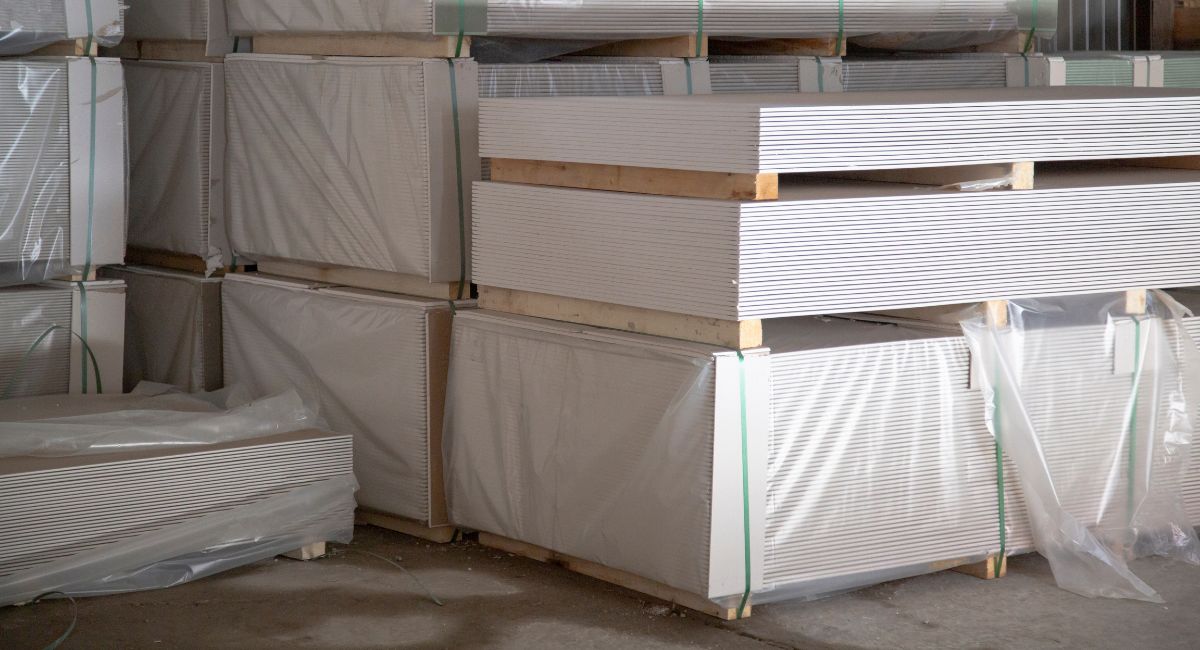As a versatile and cost-effective building material, drywall has become a staple in modern construction projects. It’s hard to imagine a world without this essential building material that plays a crucial role in the creation of beautiful and functional spaces.
What is Drywall?
Drywall, also known as gypsum board, wallboard, or plasterboard, is a panel made from gypsum plaster pressed between two thick sheets of paper. These panels are used to form interior walls and ceilings in residential and commercial buildings.
Introduced as a substitute for traditional lath and plaster construction, drywall has become popular due to its ease of installation, affordability, and adaptability. It can be cut to fit any space and is compatible with a wide range of finishes, including paint, wallpaper, and decorative textures.
Types of Drywall
In the world of drywall, there is a wide array of options available to cater to the diverse needs of various projects. Each type comes with its own unique set of characteristics, offering distinct advantages for specific applications. Let’s explore seven common types of drywall and their uses.
Regular Drywall or White Board
Regular drywall, commonly referred to as white board, is the most widely used type of drywall. It is available in various thicknesses and sizes, making it suitable for a broad range of applications.
This standard drywall is ideal for general construction purposes, such as creating interior walls and ceilings in residential and commercial buildings. It is easy to work with, cost-effective, and can be finished with paint, wallpaper, or other decorative coatings.
Mold-resistant Drywall (Green Board)
Mold-resistant drywall, also known as green board, is designed to resist moisture and mold growth, accomplished by coating the paper covering with wax.
While green board offers better protection against mold than regular drywall, it is important to note that it is not waterproof. Its most common uses are usually as a tile backer in high-moisture rooms like laundry rooms, bathrooms, or kitchens. Because green board is made to resist moisture build up, it’s perfect in these high-moisture areas of your property.
Plasterboard (Blue Board)
Plasterboard, or blue board, is specifically designed to be used with a veneer plaster finish. It is not made to be mudded, taped, or painted. It features a unique, absorbent paper surface that allows for better adhesion of the plaster.
Blue board has excellent mold and water-resistant properties, making it a good choice for areas with lots of moisture, such as bathrooms.
Soundproof Drywall
Soundproof drywall is engineered to reduce noise transmission between rooms or spaces.
All drywall will have some soundproofing ability, however, soundproof drywall has additional properties such as multiple layers of gypsum, polymers, and wood fibers, that increase that sound transmission class above that of standard drywall.
This type of drywall is ideal for home theaters, bedrooms, or any space where sound control is a priority. Although it is more expensive than regular drywall, the added benefit of noise reduction can make it a worthwhile investment.
Fire-resistant Drywall (Type X)
Fire-resistant drywall, commonly known as Type X, is designed to provide an additional layer of protection against fires. It is made with special additives, such as fiberglass, that increase its resistance to heat and flame.
Type X drywall is commonly used in commercial buildings, apartment buildings, garages, etc. Basically, any construction project where it’s required to meet fire code requirements.
Paperless Drywall
Paperless drywall uses a fiberglass covering instead of paper on its surface. This design offers superior resistance to mold and mildew growth, as fiberglass is more resistant to moisture than paper.
Paperless drywall provides a strong and durable surface that can be finished with paint or other decorative materials. It is an excellent choice for projects where mold and moisture resistance are top priorities.
Tips for Choosing the Right Drywall for Your Project
Selecting the right drywall for your project is essential to ensure a successful outcome. Here are some tips to help you make an informed decision:
- Assess the needs of your space: Consider the unique requirements of each room or area in your project. Keep in mind factors such as moisture levels, soundproofing needs, and fire safety requirements.
- Know your local building codes: Familiarize yourself with the local building codes and regulations in your area, as they may have specific requirements for drywall thickness, fire rating, or other attributes.
- Budget considerations: Different types of drywall come at various price points. Balance the needs of your project with your budget to find the best option for your situation.
- Consult with a professional: If you’re unsure about the best drywall for your project, don’t hesitate to contact Drytech Interiors! We have decades of combined experience working with, and installing drywall in Edmonton & area. Our team can offer valuable insights and recommendations and take all the stress out of your next drywall project.
Conclusion
Drywall is one of the most important building materials for any construction project and plays a significant role in the construction of modern homes and commercial spaces. It’s crucial to choose the right drywall for your specific needs, as it can make or break a successful vs unsuccessful build. Luckily, with the variety of drywall options on the market, it’s easier than ever to ensure each room of your project is drywalled with the best material.
Remember to consider the unique requirements of your space, local building codes, and budget constraints when selecting the perfect drywall for your needs. With the right knowledge and resources, you can create beautiful, functional, and safe spaces that last for decades!

